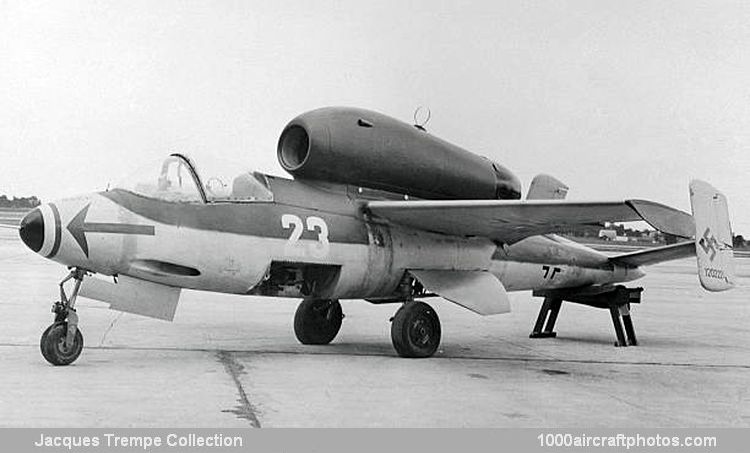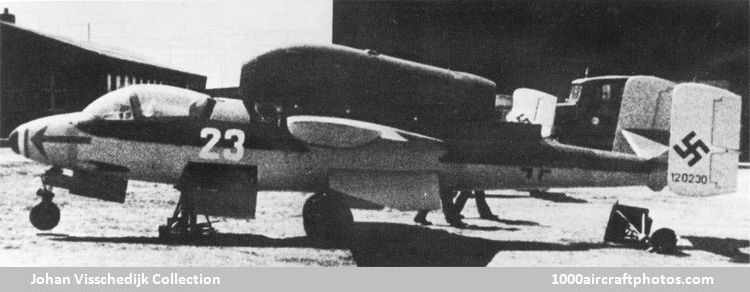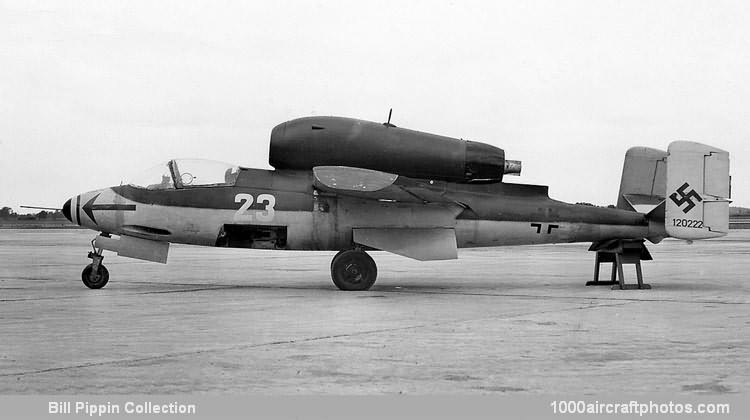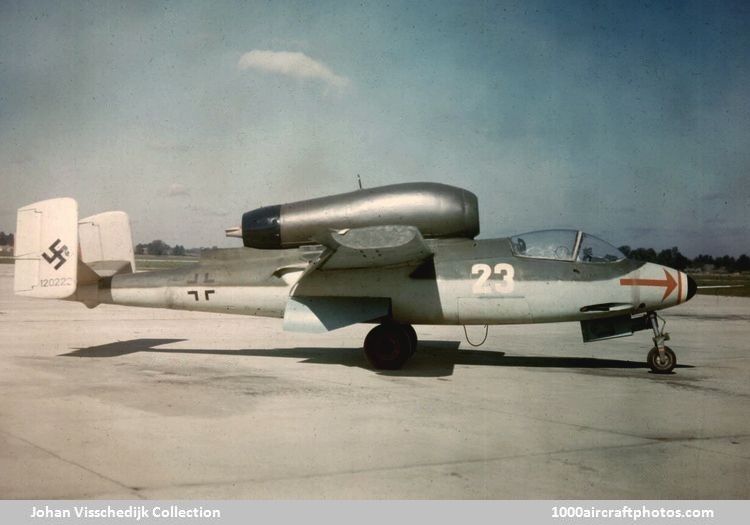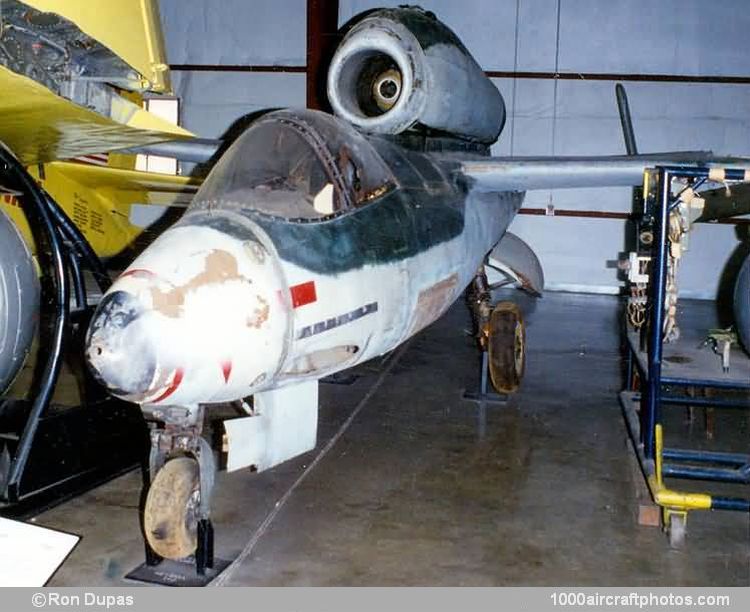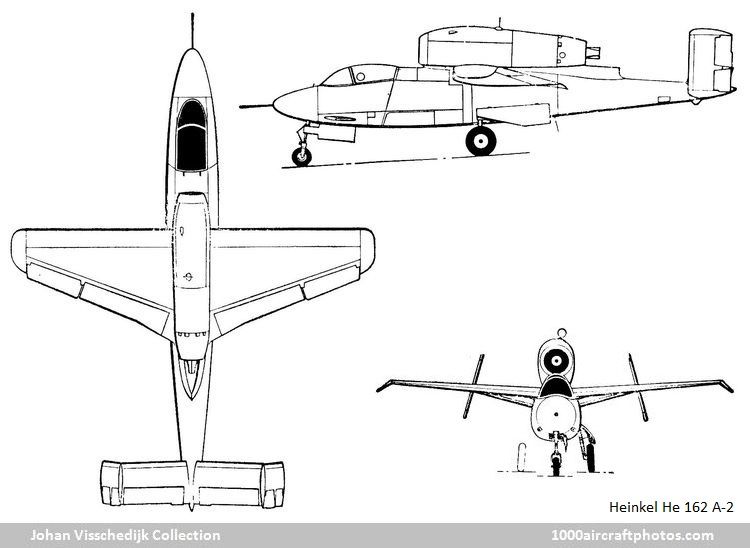09/30/2014. Remarks by Johan Visschedijk: "Popularly known as the "YQ-R""Volksjäger" ("People's Fighter"), the Heinkel He 162 progressed from drawing board to initial flight tests in the fantastically short period of 69 days! One of the most remarkable achievements of the German aircraft industry, the He 162 was the result of a specification issued by the RLM on September 8, 1944, which called for a high-performance fighter which, utilizing a minimum of strategic materials and suitable for mass production by semi-skilled labor, would be ready for quantity production by January 1, 1945. To meet this requirement, the Heinkel company produced a design which, initially known as the He 162 Spatz (Sparrow), was inspected in mockup form at Vienna-Schwechat (Austria) on September 23, 1944, and five days later was awarded a quantity order, the projected output being 1,000 machines per month.
The first prototype, the He 162 V1, flew for the first time on December 6, 1944, although defective bonding resulted in an landing gear door breaking away during this initial test. Four days later, Heinkel's Chief Test Pilot, Flugkapitan Peter, demonstrated the aircraft in front of RLM, Luftwaffe and Nazi Party officials, but during a low-altitude, high-speed run, the starboard wing leading edge ripped away, followed by the starboard aileron and wing tip, and the prototype was totally destroyed and the pilot killed. Nevertheless, development continued unabated, and the He 162 V2 and He 162 V3 were rapidly completed, various modifications being incorporated during trials, such as the fitting of anhedral wing tips to reduce the effective dihedral angle, a weight over the nose wheel to bring the center of gravity forward, changes to the wing root profile, and the design of a larger tail assembly.
The He 162 featured a one-piece wing of wooden construction, and the fuselage had duralumin formers and skin with a plywood nose, and the tail was of mixed duralumin, steel and wood.
Three final assembly plants were planned in Germany: Heinkel-Nord at Rostock, with a monthly capacity of 1,000 machines, the Junkers plant at Dessau with a similar monthly capacity, and the Mittelwerke G.m.b.H. with a monthly capacity of 2,000 machines. Heinkel's plant at Vienna-Schwechat was responsible for development and the pre-production batch of He 162 A-0 fighters. Many other plants were integrated in the production program, and initial production machines were delivered in February and March 1945 to training units at Ludwigslust and Rechlin, and to the first operational unit to re-equip with this fighter, JG 84 based at Leck in Schleswig-Holstein.
The initial production He 162 A-1 and He 162 A-2 differed only in equipment, and carried an armament of two 0.787 in (20 mm) MG 151 cannon, but the He 162 A-3 had two 1.18 in (30 mm) MK 108 cannon. The production machines were variously powered by four variants of the BMW 003 axial-flow turbojet rated at 1,764 lb (800 kg) st. Only 116 pre-production and production He 162 A fighters were actually completed, although appreciable numbers had reached an advanced stage of assembly at the time of Germany's defeat.
